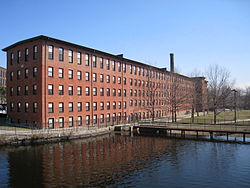This timeline of clothing and textiles technology covers events relating to fiber and flexible woven material worn on the body. This includes the making, modification, usage, and knowledge of tools, machines, techniques, crafts, and manufacturing systems (technology).
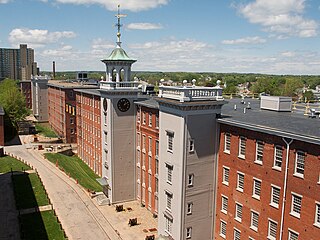
Lowell National Historical Park is a National Historical Park of the United States located in Lowell, Massachusetts. Established in 1978 a few years after Lowell Heritage State Park, it is operated by the National Park Service and comprises a group of different sites in and around the city of Lowell related to the era of textile manufacturing in the city during the Industrial Revolution. In 2019, the park was included as Massachusetts' representative in the America the Beautiful Quarters series.

Francis Cabot Lowell was an American businessman for whom the city of Lowell, Massachusetts, is named. He was instrumental in bringing the Industrial Revolution to the United States.
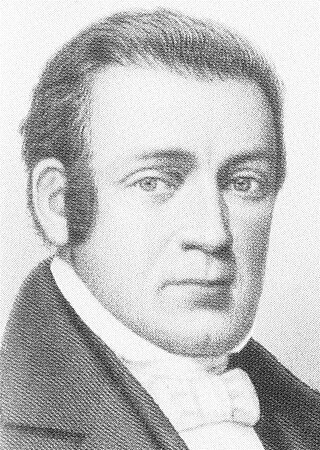
Paul Moody was a U.S. textile machinery inventor born in Byfield, Massachusetts. He is often credited with developing and perfecting the first power loom in America, which launched the first successful integrated cotton mill at Waltham, Massachusetts, in 1814, under the leadership of Francis Cabot Lowell and his associates.

A cotton mill is a building that houses spinning or weaving machinery for the production of yarn or cloth from cotton, an important product during the Industrial Revolution in the development of the factory system.

The Boston Associates were a loosely linked group of investors in 19th-century New England. They included Nathan Appleton, Patrick Tracy Jackson, Abbott Lawrence, and Amos Lawrence. Often related directly or through marriage, they were based in Boston, Massachusetts. The term "Boston Associates" was coined by historian and professor of economics and Marxism, Vera Shlakman in her 1935 work, Economic History of a Factory Town, A Study of Chicopee, Massachusetts.

Completed in 1796, the Pawtucket Canal was originally built as a transportation canal to circumvent the Pawtucket Falls of the Merrimack River in East Chelmsford, Massachusetts. In the early 1820s it became a major component of the Lowell power canal system. with the founding of the textile industry at what became Lowell.
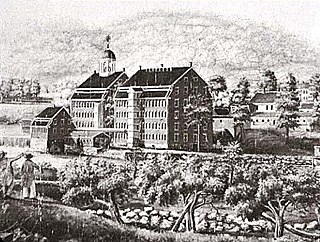
The Waltham-Lowell system was a labor and production model employed during the rise of the textile industry in the United States, particularly in New England, during the rapid expansion of the Industrial Revolution in the early 19th century.

Nathan Appleton was an American merchant and politician and a member of the group of entrepreneurs known as "The Boston Associates".
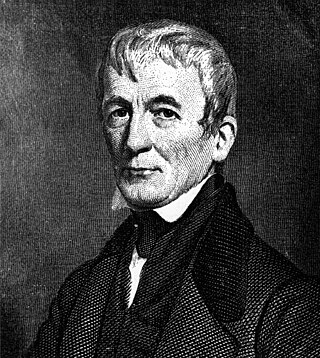
Patrick Tracy Jackson was an American manufacturer, one of the founders of the Boston Manufacturing Company of Waltham, Massachusetts, and later a founder of the Merrimack Manufacturing Company, whose developments formed the nucleus of Lowell, Massachusetts.

The Amoskeag Manufacturing Company was a textile manufacturer which founded Manchester, New Hampshire, United States. From modest beginnings it grew throughout the 19th century into the largest cotton textile plant in the world. At its peak, Amoskeag had 17,000 employees and around 30 buildings.

The Lowell mill girls were young female workers who came to work in textile mills in Lowell, Massachusetts during the Industrial Revolution in the United States. The workers initially recruited by the corporations were daughters of New England farmers, typically between the ages of 15 and 35. By 1840, at the height of the Textile Revolution, the Lowell textile mills had recruited over 8,000 workers, with women making up nearly three-quarters of the mill workforce.
The history of Lowell, Massachusetts, is closely tied to its location along the Pawtucket Falls of the Merrimack River, from being an important fishing ground for the Pennacook tribe to providing water power for the factories that formed the basis of the city's economy for a century. The city of Lowell was started in the 1820s as a money-making venture and social project referred to as "The Lowell Experiment", and quickly became the United States' largest textile center. However, within approximately a century, the decline and collapse of that industry in New England placed the city into a deep recession. Lowell's "rebirth", partially tied to Lowell National Historical Park, has made it a model for other former industrial towns, although the city continues to struggle with deindustrialization and suburbanization.

The Lowell Mills were 19th-century textile mills that operated in the city of Lowell, Massachusetts, which was named after Francis Cabot Lowell; he introduced a new manufacturing system called the "Lowell system", also known as the "Waltham-Lowell system".
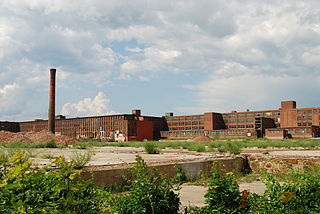
The Draper Corporation was once the largest maker of power looms for the textile industry in the United States. It operated in Hopedale, Massachusetts for more than 130 years.
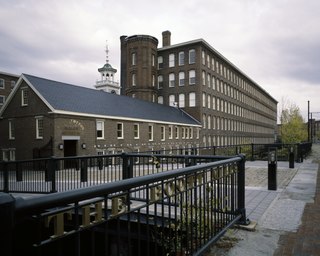
The Boott Mills in Lowell, Massachusetts were a part of an extensive group of cotton mills, built in 1835 alongside a power canal system in this important cotton town. Its incorporators were Abbott Lawrence, Nathan Appleton, and John Amory Lowell, and is named after Kirk Boott, the first Agent of the Proprietors of Locks & Canals in Lowell. Today, the Boott Mills complex is the most complete remainder of antebellum textile mills built in Lowell. The original Mill No. 6 is managed by the National Park Service unit Lowell National Historical Park and houses the Boott Cotton Mills Museum and the Tsongas Industrial History Center for K-12 educational programs.
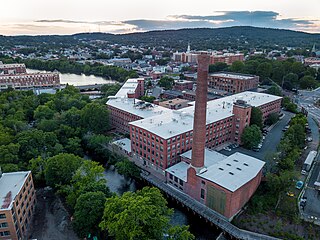
Charles River Museum of Industry & Innovation is a museum of the American Industrial Revolution located on the Charles River Bike Path, near the intersection of the Charles River and Moody Street in Waltham, Massachusetts. It houses and displays machinery and artifacts of the industrial revolution from the nineteenth and twentieth centuries. The building was originally built as part of the Boston Manufacturing Company, Francis Cabot Lowell's seminal, fully integrated textile mill. The museum, which was incorporated in 1980 and opened to the public in 1988, takes up only a small portion of the previous mill building complex.

The Saco–Pettee Machine Shops is a historic factory complex at 156 Oak Street in the Newton Upper Falls area of Newton, Massachusetts. Although the area has an industrial history dating to the early 19th century, the oldest buildings in this complex, consisting of about thirteen brick buildings, were built in 1892. The property, a major economic force in the development of Newton Upper Falls, was listed on the National Register of Historic Places in 1986. It was home to Clark's N.A., the North American home base to Clark's Shoes, makers of fine footwear, until they relocated to Waltham Ma. in October 2016.

The Saco-Lowell Shops was once one of the largest textile machine manufacturers in the United States. It was formed in 1912 with a merger between the Lowell Machine Shop with the Saco-Pettee Machine Company. At its peak in the 1920s, the company had manufacturing facilities in Lowell and Newton, Massachusetts, and Biddeford, Maine. The company maintained their executive office at 77 Franklin Street in Boston, and also had a southern office in Charlotte, North Carolina.

Seth Bemis was an American entrepreneur, active along the Charles River in the early Industrial Revolution. It is claimed that he was the first to manufacture cotton duck cloth. He was also father to attorney George Bemis.
